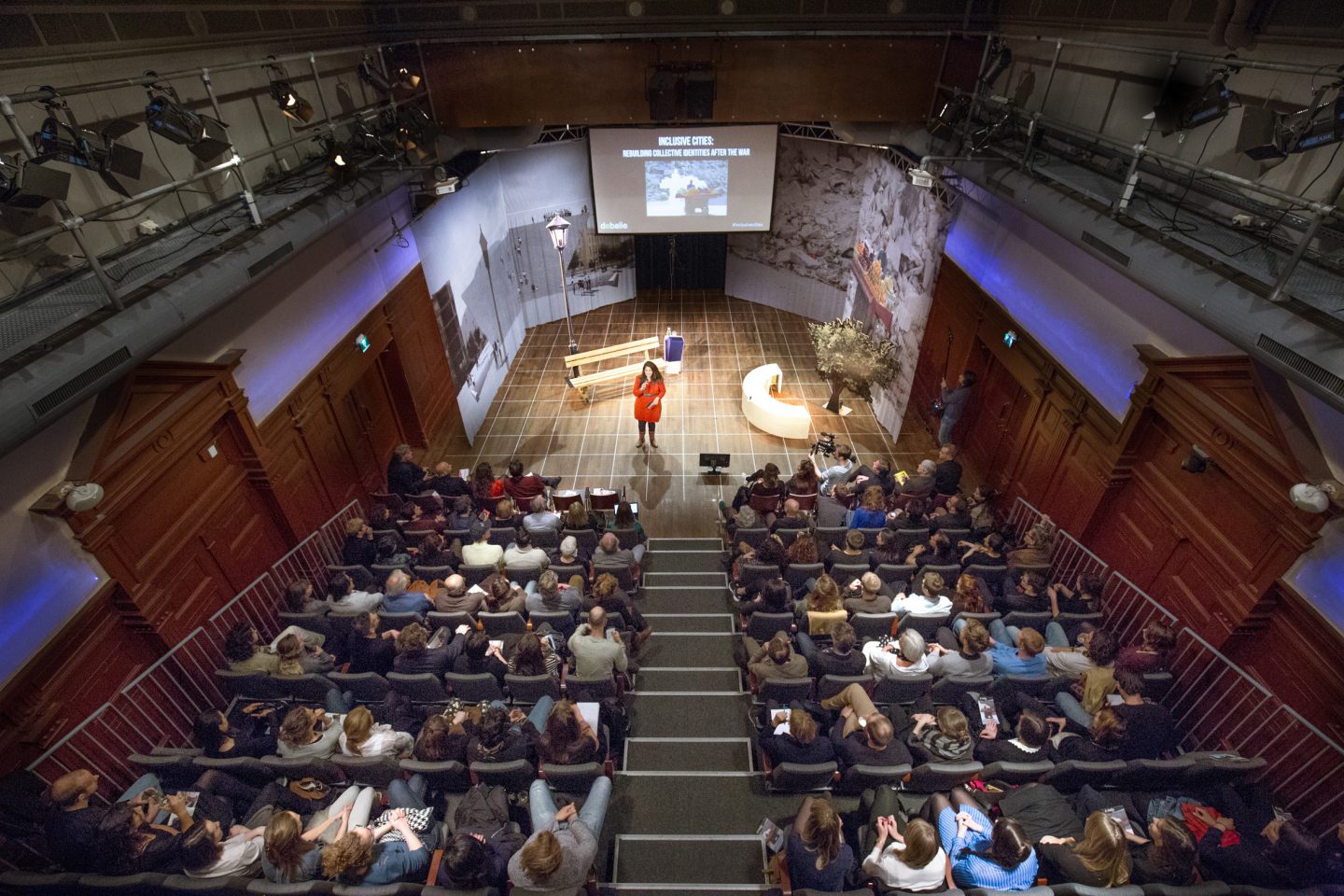












Inclusive Cities: Rebuilding Collective Identities After the War
Rebuilding collective identities after the war
De Balie and architect Arna Mackic present a three part series about the role of architecture in the creation of inclusive cities. We investigate this by looking at former and current war-torn countries like Bosnia – Herzegovina and Syria, but also by looking at Western – European cities like Amsterdam, Stockholm and Paris, that because of shifting demographic compositions need to question their identity again and build on a common and shared heritage.
In the first episode we consider the relation between architecture and conflict. The impact of the destruction of buildings, squares and bridges that functioned as a symbol for a shared history and identity is huge. How can cities rebuild themselves and how can architecture create peaceful coexistence between different groups of people? How can countries, governments, companies, and cities construct collective identities and inclusive futures through architecture? The Dutch – Bosnian architect Arna Mackic and the Syrian architect Mohamed al Mufti will, assisted by their research and work, talk about the importance of creating inclusive, public spaces. Spaces which are based on common rituals and traditions and can be appropriated by different groups. Places that can acknowledge and reflect the pain of war, but by making them common ground, can also perform a healing function.
To conclude, we look at how we can apply lessons from cities who are destroyed by conflict to cities in Western Europe. How can the west, with its often segregated cities and big shifting demographics create spaces that stimulate collectivity and solidarity and how can we make ‘charged’ national heritage inclusive?
photos by Jan Boeve
Click here to watch the recording of this evening
Click here to listen to De Balie podcast about this program
Inclusieve Educatie
+